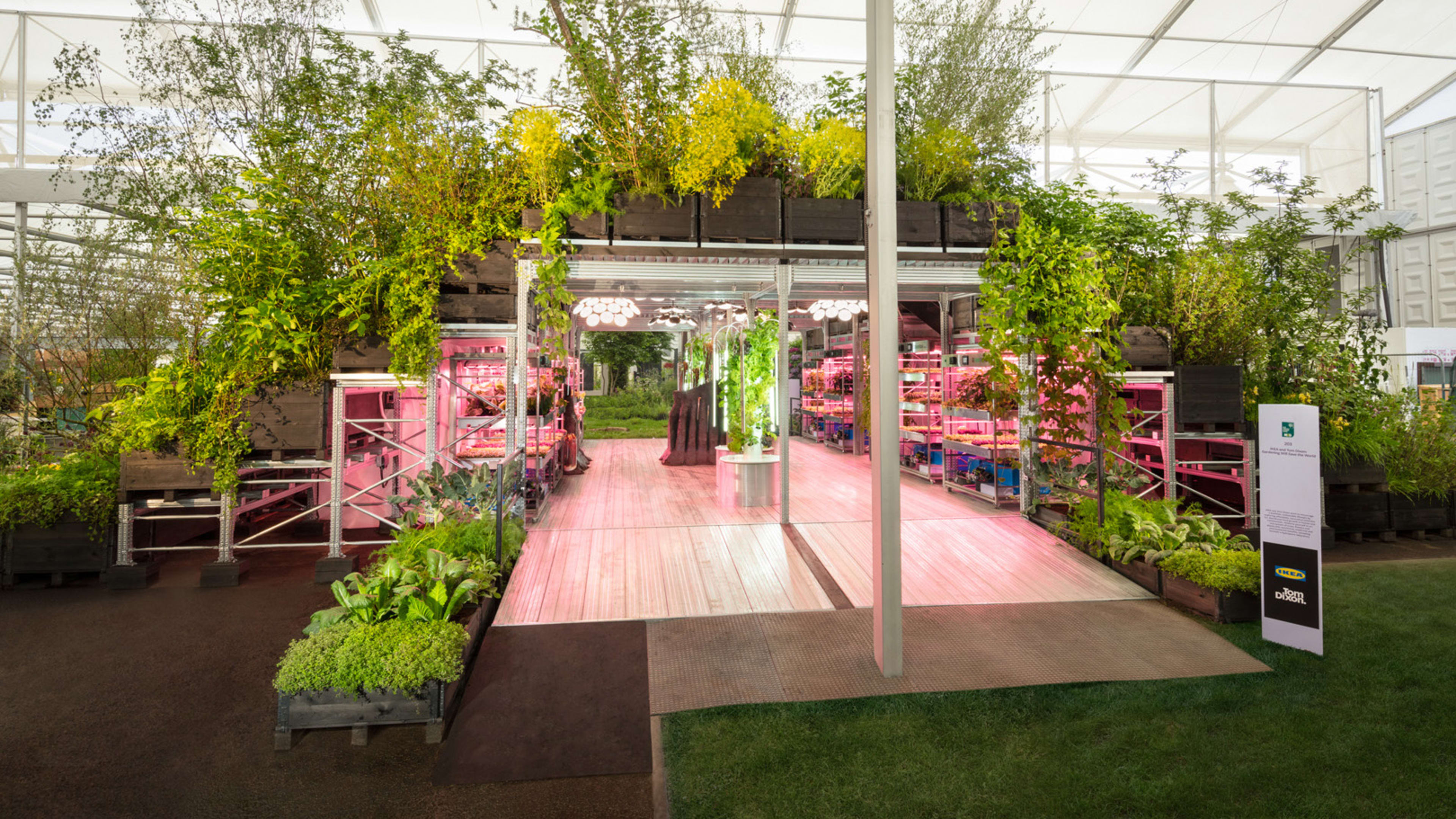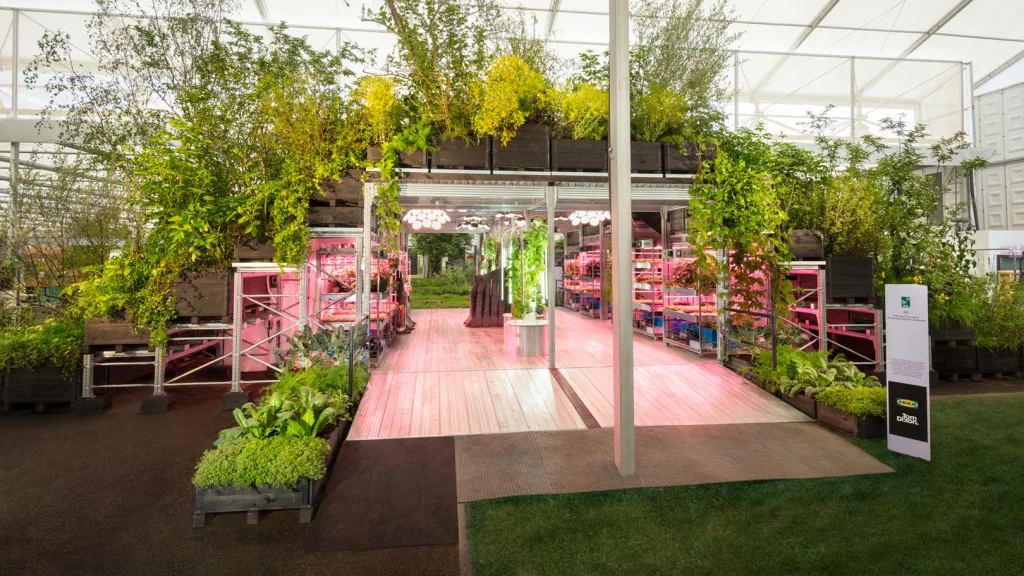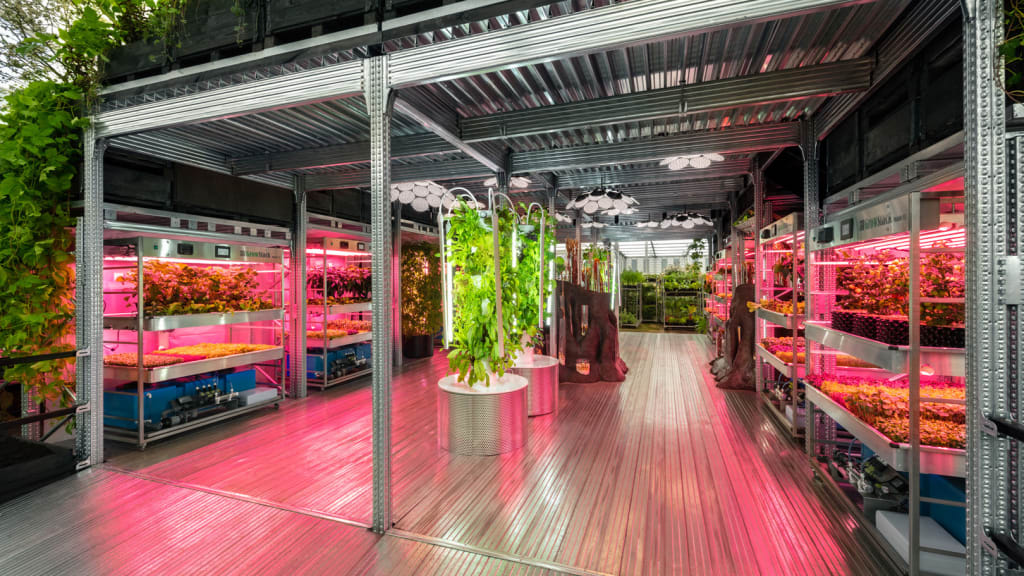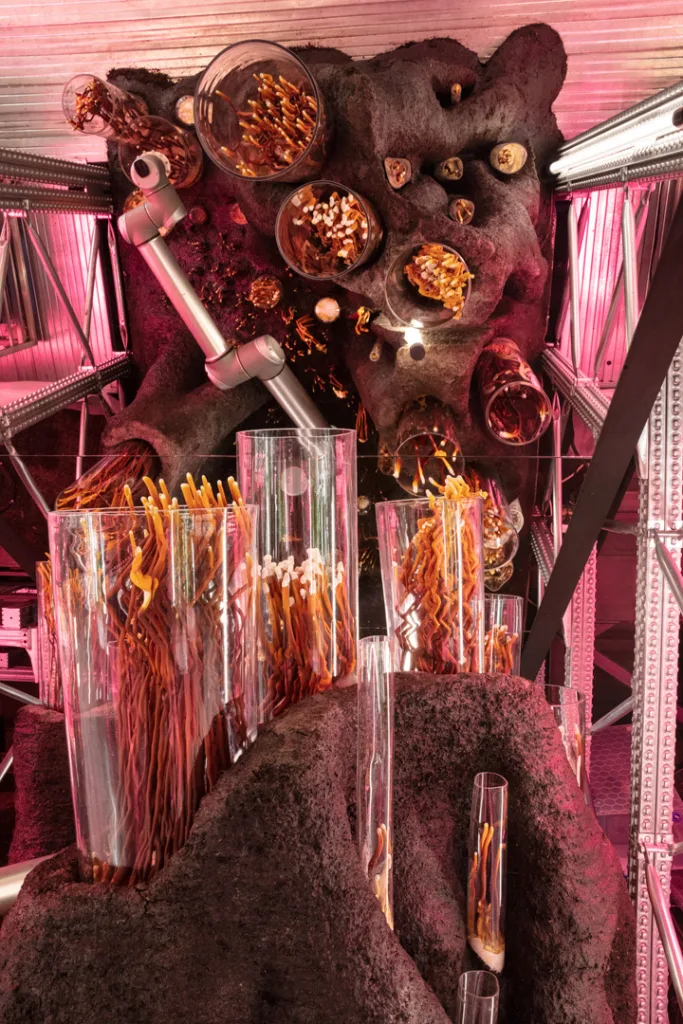The title of Ikea and the designer Tom Dixon’s urban farming experiment, which has opened at the Chelsea Flower Show in London, is Gardening Will Save the World. The show is a tantalizing look at how to do that–a future where people in cities can grow their own food in kitchens and on rooftops with minimal energy consumption and near-zero carbon footprint.
While the Swedish company already has some home “cultivation units” in its catalog, those hydroponic trays are too tiny and too limited in scope to provide continuous nourishment for individuals or families. Sure, they’re fine for growing some lettuces and herbs, but you’ll run out of them fast and you will be out of luck when it comes to larger produce like cucumbers or cauliflower. Thankfully, Ikea doesn’t want to stop there.
[Image: Ikea]
The retail giant now seems focused on taking urban farming to the next level. Starting with itself, in fact: Ikea is using urban farming techniques on its own stores. Back in March, the Swedish company announced it was growing lettuce in shipping containers right out of its stores in in Malmö and Helsingborg, Sweden, with the intention of using this “hyper-local” produce in the store’s restaurants.
At the Chelsea Flower Show, Ikea–working with Dixon–further delves into the concept of hyper-local farmed food: veggies that you grow right in your house or at your doorstep as a way to improve your own life and reduce the emissions that come with industrial farming. It features two gardening areas: a raised modular landscape with edible and medicinal plants and an enclosed garden fed by a hydroponic systems and controllable lighting. The two levels host over 4,000 plants.
The installation is designed to showcase the technology and how beautiful it can look thanks to good design. According to Dixon, they are “aiming to give back to cities and create productive landscapes within urban zones,” although these ideas can be used in suburban farming too.
Urbanites in cities like New York, London, or Paris, prefer to go to markets in which nearby farmers bring their produce, milk, meat, and fish. These products, coming from nearby areas, are often fresher and carry a much smaller carbon footprint tag than what you can find in supermarkets, which often travels through hundreds or thousands of miles in refrigerated transports before reaching your home. Urban gardens will eliminate a lot of this waste because of location alone. Not to mention the packaging waste that will be eliminated if people can just grab a cucumber or a few tomatoes to make a salad from a hydroponic unit in their kitchen, a common building area, or a roof.
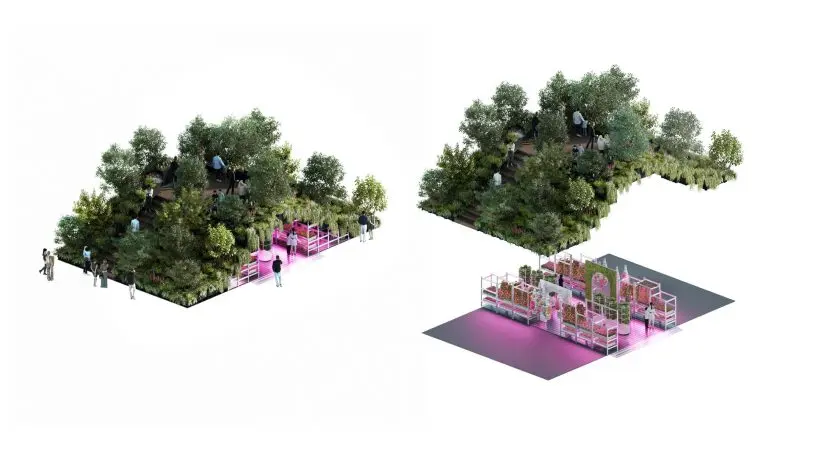
The project, which was announced back in November 2018, isn’t done yet. Dixon and Ikea are working on actual modular products designed to enjoy the benefits of this architecture. According to Ikea, this range of products will be available at all Ikea stores worldwide starting in 2021.
Recognize your brand’s excellence by applying to this year’s Brands That Matter Awards before the early-rate deadline, May 3.
